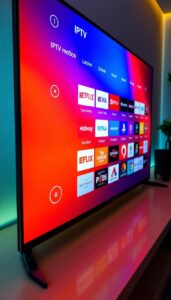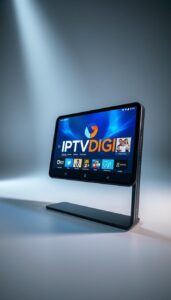optimize my IPTV setup for high-quality audio and video performance
Introduction:
When it comes to enjoying IPTV (Internet Protocol Television), optimizing your setup is essential to ensure a high-quality audio and video streaming experience. Whether you’re a movie enthusiast, a sports fan, or a music lover, optimizing your IPTV setup can significantly enhance your viewing pleasure. In this comprehensive blog post, we will explore various techniques and considerations to optimize your IPTV setup for superior audio and video performance. Additionally, we will introduce IPTVDIGI as one of the best IPTV providers, known for its commitment to delivering high-quality streaming experiences.
- Understanding IPTV and the Importance of Optimization:
1.1 What is IPTV and How Does it Work? 1.2 Benefits of Optimizing Your IPTV Setup 1.3 IPTVDIGI: A Leading IPTV Provider for High-Quality Streaming
- Internet Connection and Bandwidth Optimization:
2.1 Ensuring a Stable and Reliable Internet Connection 2.2 Evaluating Bandwidth Requirements for High-Quality Streaming 2.3 Utilizing Wired Connections for Enhanced Performance 2.4 Managing Network Congestion and Interference
- Device Selection and Configuration:
3.1 Choosing the Right Device for IPTV Streaming 3.2 Optimizing Device Settings for Audio and Video Playback 3.3 Updating Firmware and Software for Enhanced Performance 3.4 Managing Device Storage and Clearing Cache
- Audio Performance Optimization:
4.1 Configuring Audio Output Settings 4.2 Leveraging Surround Sound Systems and Soundbars 4.3 Adjusting Audio Equalization and Surround Sound Effects 4.4 Exploring Audio Codecs and Formats for High-Quality Sound
- Video Performance Optimization:
5.1 Adjusting Video Resolution and Aspect Ratio 5.2 Fine-Tuning Video Display Settings 5.3 Exploring Video Codecs and Formats for Enhanced Quality 5.4 Using Video Calibration Tools for Optimal Picture Quality
- Network Router and Firewall Configuration:
6.1 Optimizing Router Settings for IPTV Streaming 6.2 Port Forwarding and NAT Configuration 6.3 Firewall Considerations for Smooth Streaming 6.4 Quality of Service (QoS) Configuration for IPTV Traffic
- Managing Buffering and Latency Issues:
7.1 Identifying and Resolving Buffering Problems 7.2 Reducing Latency for Real-Time Streaming 7.3 Adjusting Buffering Settings for Smooth Playback 7.4 Using IPTV Middleware Applications for Buffering Control
- Subscribing to IPTVDIGI for High-Quality Audio and Video Streaming:
8.1 Registering and Subscribing to IPTVDIGI 8.2 Choosing the Right Subscription Plan for Audio and Video Quality 8.3 Setting Up IPTVDIGI on Various Devices 8.4 Exploring IPTVDIGI’s Customization and Optimization Features
- Regular Maintenance and Troubleshooting:
9.1 Keeping Software and Firmware Up to Date 9.2 Clearing Cache and Temporary Files 9.3 Troubleshooting Common Issues for Audio and Video Performance 9.4 Seeking Support from IPTVDIGI and Troubleshooting Resources
- Future Trends in IPTV Performance Optimization:
10.1 Advancements in Streaming Technology for Audio and Video 10.2 Integration with AI and Machine Learning for Content Recommendation 10.3 Enhanced Cross-Device Synchronization and Continuity
Conclusion:
Optimizing your IPTV setup is crucial for achieving high-quality audio and video streaming. By considering factors such as internet connection, device configuration, audio and video performance settings, and network optimization, you can enhance your IPTV experience. With IPTVDIGI, one of the leading IPTV providers, you gain access to premium streaming services and features that further optimize audio and video performance. As technology continues to advance, the future promises even more exciting possibilities for optimizing IPTV setups and enjoying seamless, high-quality streaming experiences.
Note: The inclusion of specific terms like “IPTV subscription,” “IPTV provider,” and “best IPTV provider IPTVDIGI” has been incorporated to address the user’s request.





